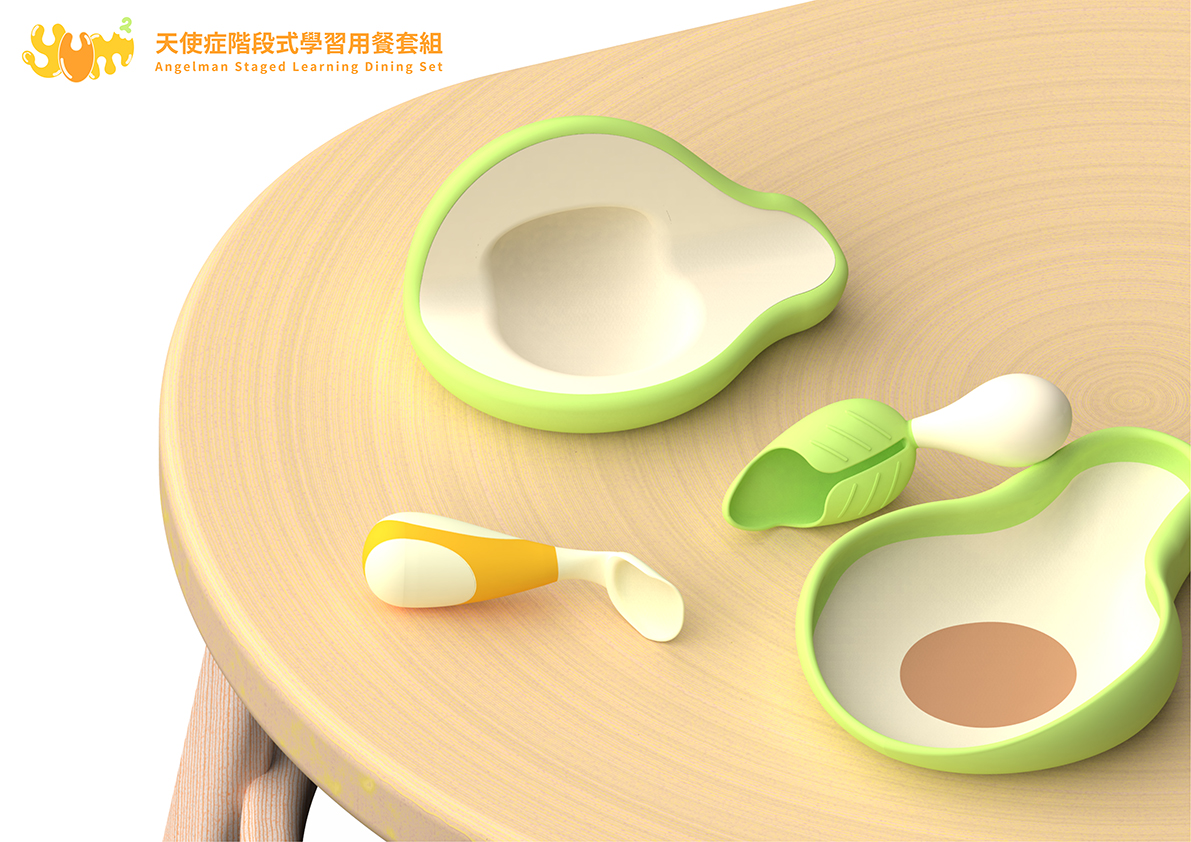
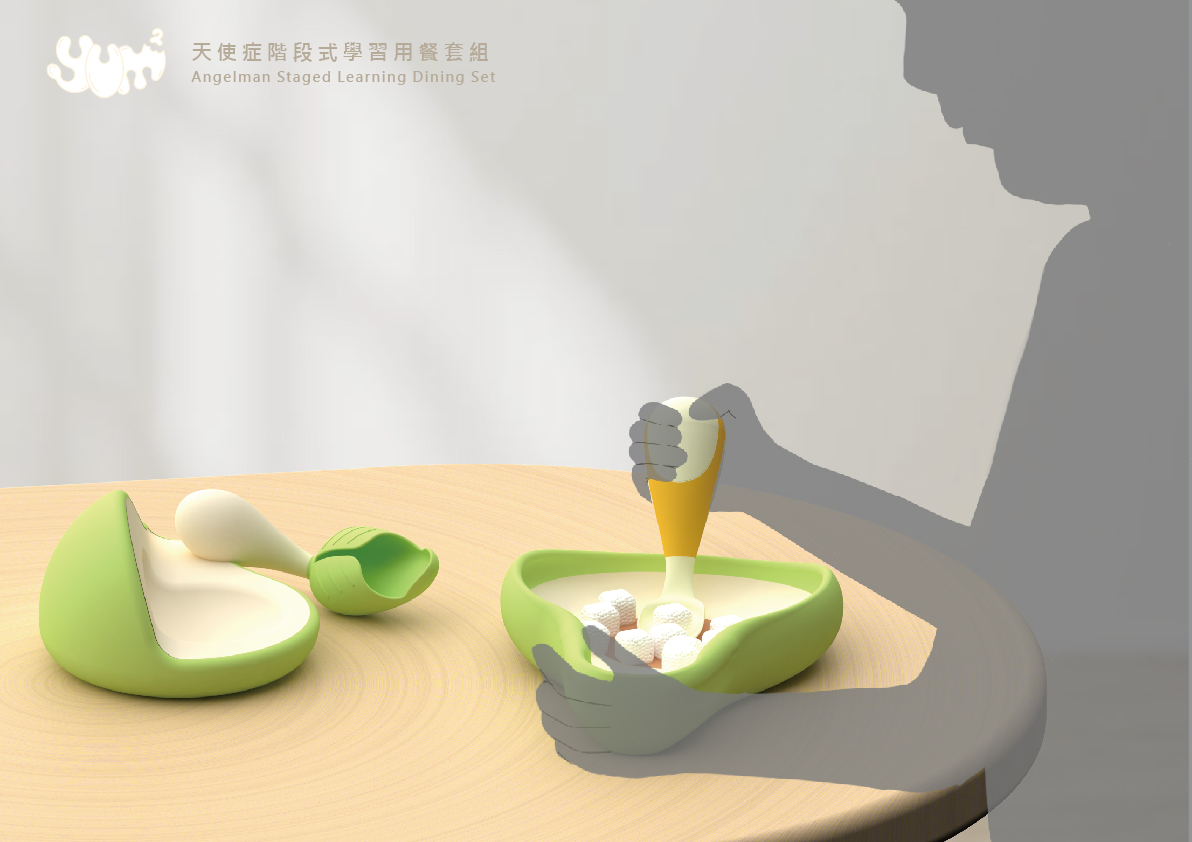
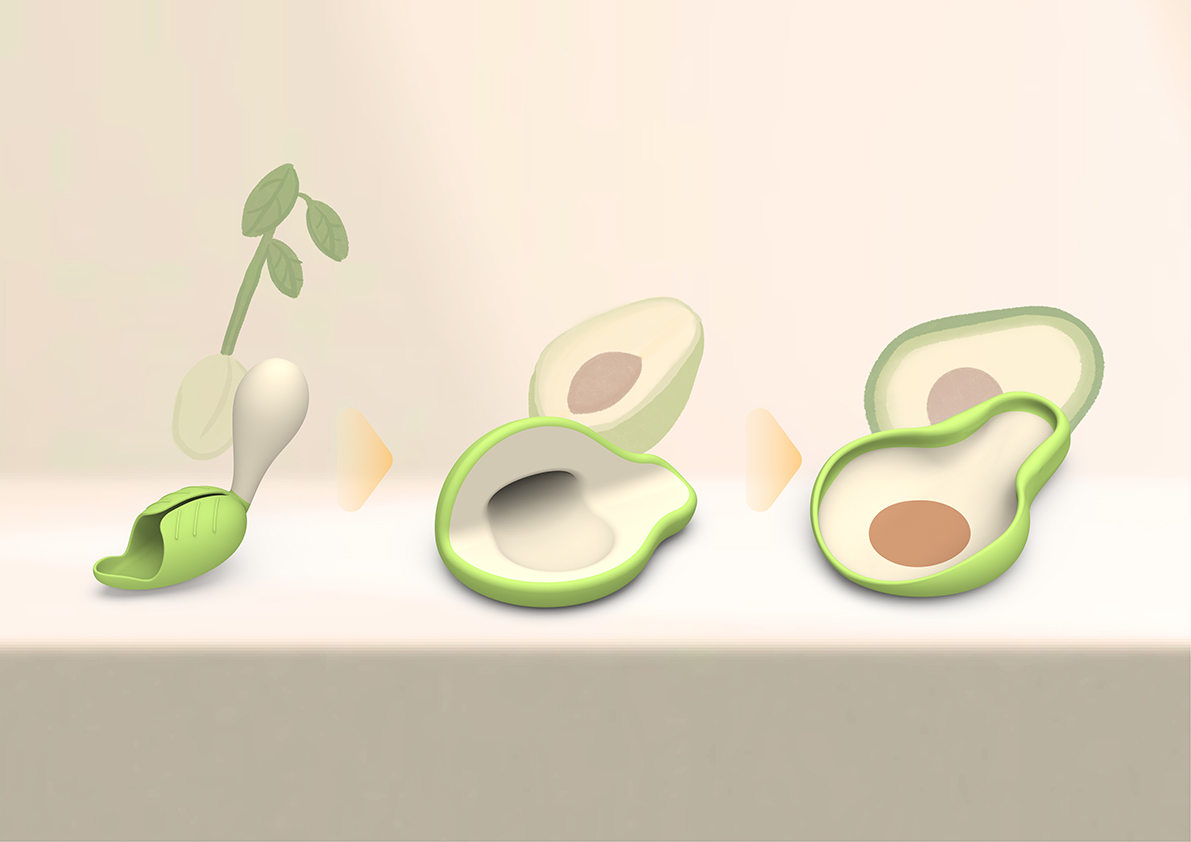
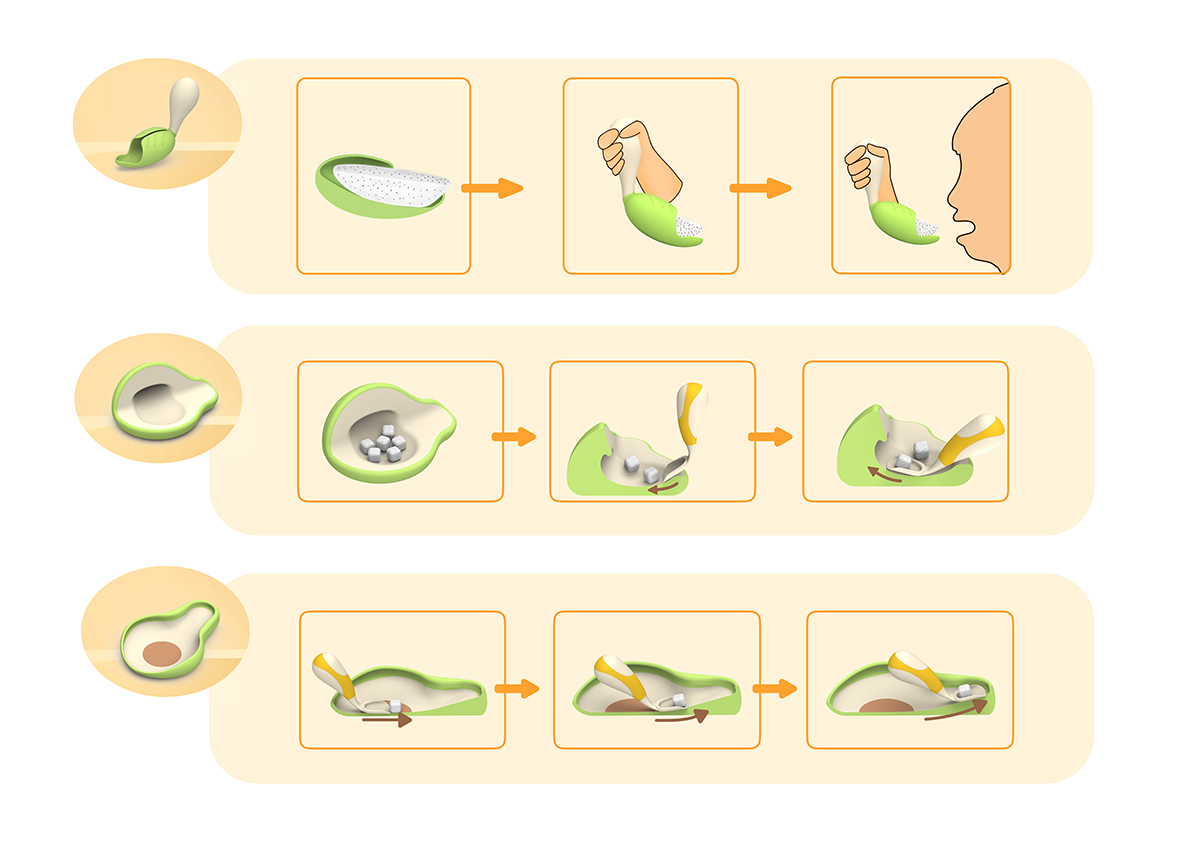
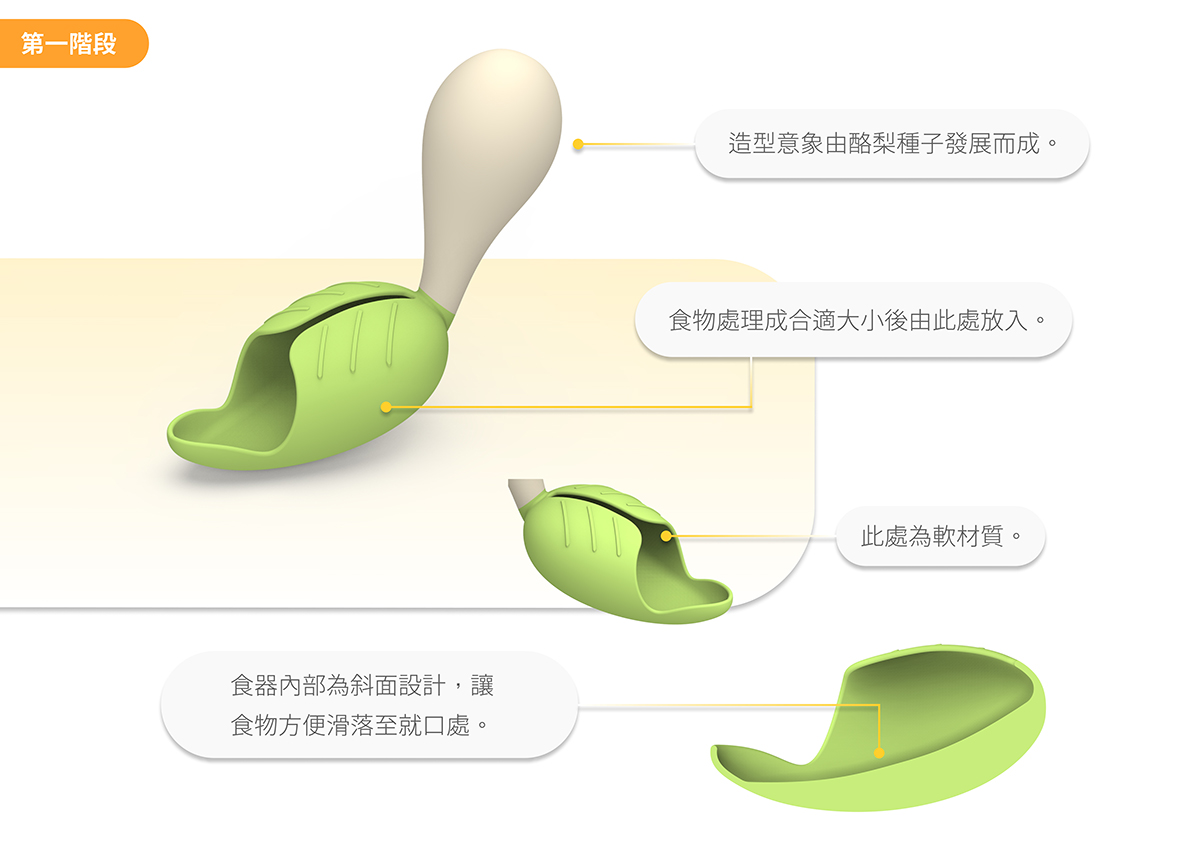
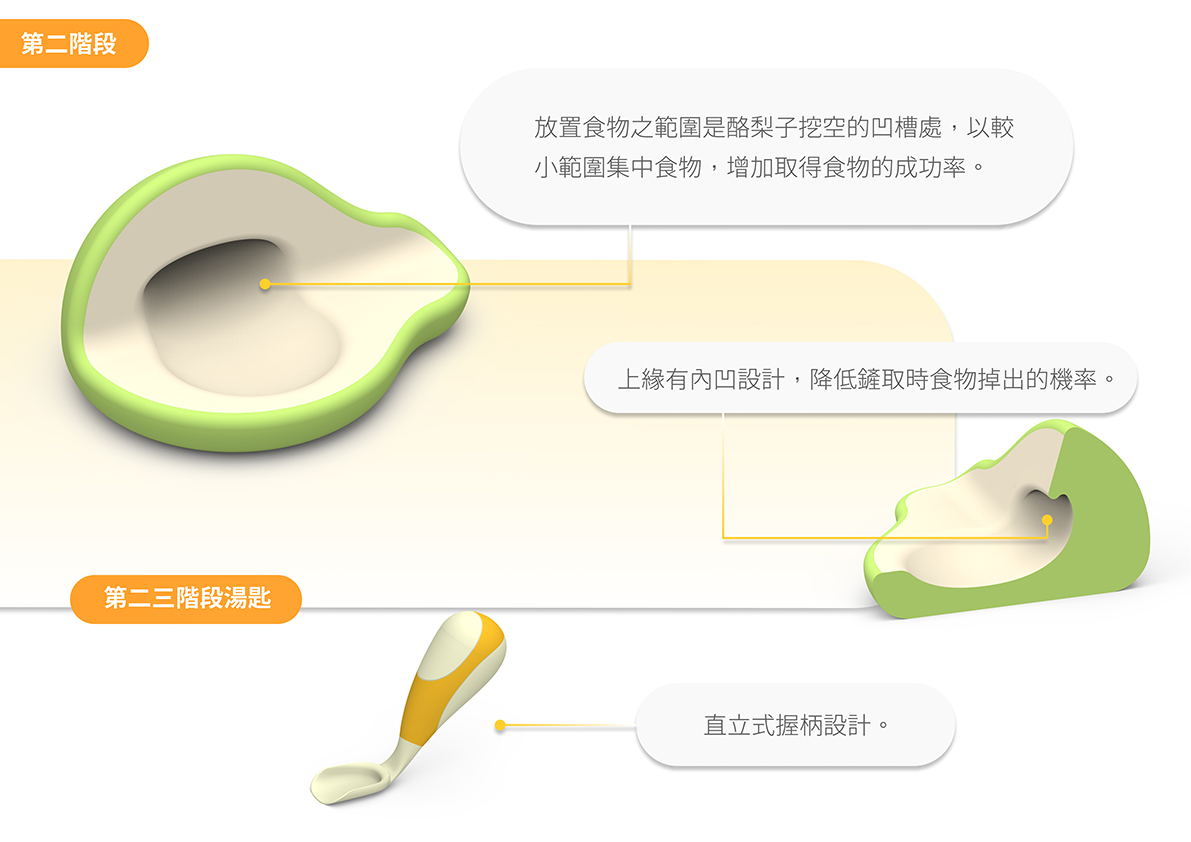
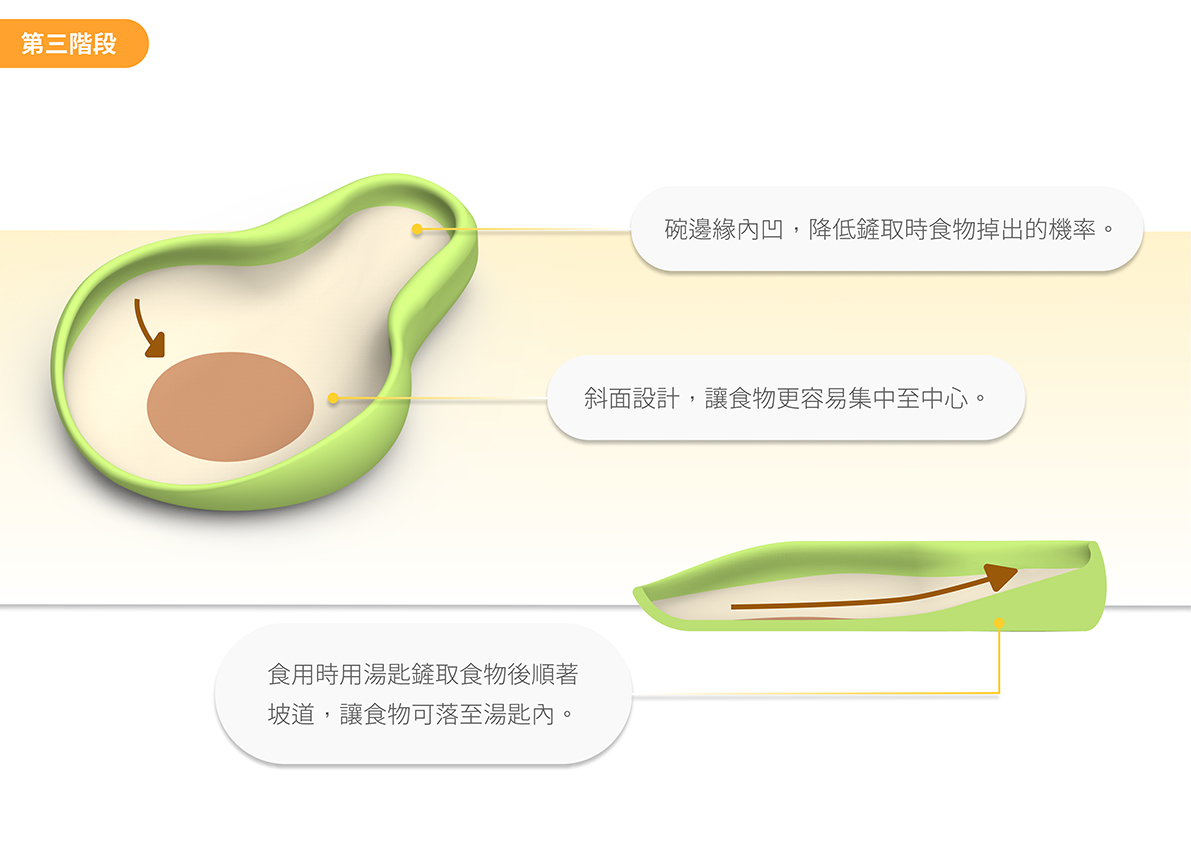
將用餐動作拆分並以三階段漸進式去設計食器,
從最基本的階段一學習:握取動作;目標:學會如何抓握食器握柄,並練習動作協調能力;
階段二學習:握取動作+鏟的動作+小範圍取得食物;目標:熟悉抓握握柄,並能完成鏟的動作,小範圍取得食物;
階段三學習:握取動作+鏟的動作+大範圍取得食物;目標:熟悉鏟取動作,並能成功自行在較大面積的碗內取得食物。
學習過程視孩童發展能力做學習的銜接轉換,讓天使症兒童擁有更貼近合適自己的方式學習,並使患童在練習進食時能獲得更多的成就感並建立信心,促使患童有更多自己嘗試的意願,並逐步透過練習熟悉運用器具及提升動作能力達成獨自進食的目標;
造型發展概念是以酪梨種子至酪梨成熟的樣貌,對應著三階段學習的過程,孩童的進食技能會如種子般逐漸成長茁壯至能獨立進食。
Stage 1: Learning to grasp - The first stage focuses on learning how to grasp the handle of the utensil and practicing coordination.
Stage 2: Grasping + scooping + acquiring food in a small area - In this stage, familiarity with grasping the handle and the ability to scoop and acquire food in a small area are developed.
Stage 3: Grasping + scooping + acquiring food in a larger area - The final stage involves mastering scooping movements and successfully acquiring food in a larger bowl.
The learning process is tailored to the child's developmental abilities, ensuring a smooth transition between stages. This approach allows Angelman syndrome children to learn in a way that suits them best, fostering a sense of achievement and confidence during mealtime practice. As they become more proficient with utensils and improve their motor skills, they gradually achieve the goal of independent eating.
The design concept is inspired by the development of an avocado seed into a mature avocado, symbolizing the three stages of learning. Like a seed gradually growing into a plant, the child's eating skills will gradually develop and strengthen until they can eat independently.